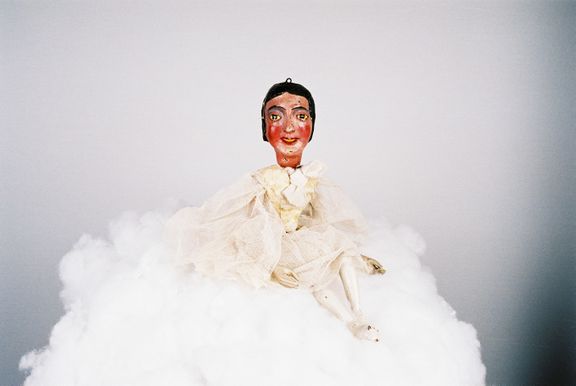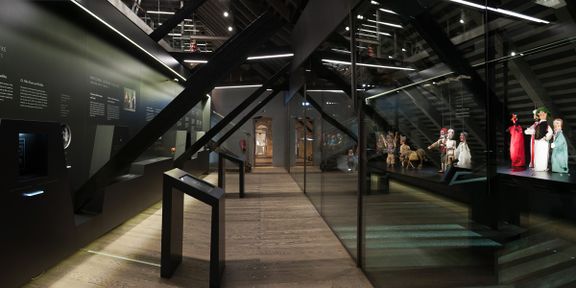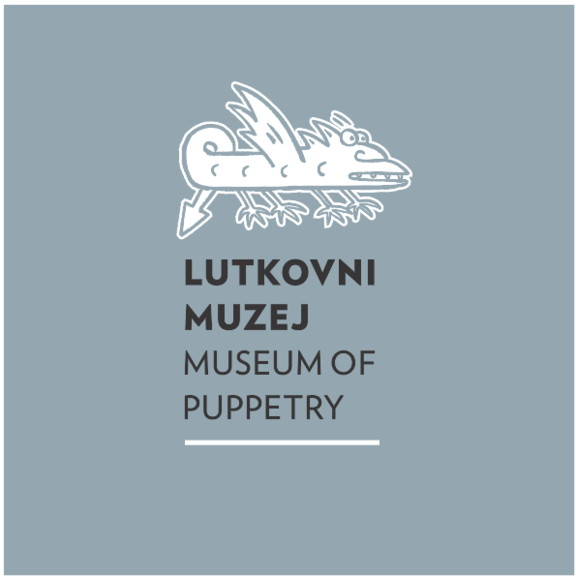Museum of Puppetry
-
to
30 Jun 2017
30 Sep 2017
Italy Cividale del Friuli/Čedad International Centre Vittorio Podrecca – Maria Signorelli’s
The pioneers of European puppetry, an exhibition featuring Milan Klemenčič's puppets (Museum of Puppetry), in the framework of the All Strings Attached: Pioneers of the European Puppetry Behind the Scenes, a Creative Europe project organised in cooperation with Ljubljana Puppet Theatre,
The establishment of the museum presents a pioneering work for Slovene puppet arts, as the material history of Slovene puppetry has never been before systematically researched, not to mention restored and exhibited.
Background
Slovenia's tradition of recorded and preserved puppet theatre goes back to early years of 20th century. At that tim, one of the primary figures was the painter Milan Klemenčič (1875–1957), who established his own puppet theatre. These were later, between the wars, greatly popularised and multiplied by the Sokol [Hawk] movement and puppetry was present to such an extent that in 1933, Ljubljana hosted the international puppet association UNIMA congress. After the war, in 1948, the Ljubljana Puppet Theatre was established and with almost 300 premier performances being hosted there up until now, puppetry forms a regular part of Slovenia's cultural production.
In 1990, Milan Klemenčič's daughter donated his legacy to the Ljubljana Puppet Theatre Museum Collection. The collection was set as a part of Ljubljana Puppet Theatre and while it is now incorporated into the museum, it was in a way also its predecessor. The material legacy of other early puppet theatres was mostly housed in various personal collections or regional and specialised museums and archives, where a lot of it still resides.
The Ljubljana Puppet Theatre had its own, rather vast vaults and in fact, they are now the primary source of the museum.
The vaults of Ljubljana Puppet Theatre
The storage rooms of the theatre had kept for about 300 shows of puppet materials, which means around 3000 puppets and the accompanying scenery set-ups. These were never systematically stored, and the material legacy of theatre based Slovene puppetry was actually quite badly preserved. When a few years ago the decision to establish the museum was taken, the Ljubljana Puppet Theatre was faced with the fact that no previous know-how on handling and restoring the archived materials was available. For this, the skills had to be be gathered elsewhere, like in the Czech Republic, which has a very long and deep connection with the puppet theatre.
While the museum now holds the highlighted pieces, the vaults nevertheless still keep most of the materials, and based on the knowledge gotten when setting up the museum, these materials are now being actively restored and conserved. For this, the theatre has recently gotten funds from Creative Europe with a project that also which involves the Municipality of Čedad (Italy), the Spanish theatre group Etcetera and the Croatian art academy in Osijek.
The museum collection and programme
Museum of Puppetry is set up in a recently restored part of the Ljubljanski grad. Its collection is divided into three distinct parts, with the first one being titled The birth of Slovene puppetry (1910–1968). Besides the aforementioned legacy of Milan Klemenčič and of the Sokol movement, there is also the very curios collection of the Partisan puppet theatre (set up during the war) and a focus on the early works by the Ljubljana Puppet Theatre - with some of those plays still running today.
The second section presents what they call the Cornerstones of Slovene puppetry and focuses on both the development of Slovene puppetry from 1968 onwards and also on the contemporary artistic creation in this field, which has at the start of the 1980s also become a podium for a more grown-up oriented and experimental puppet endeavours. Besides material legacy and stills from the shows, they are also screening some early Slovene puppet animations and televised puppet shows, as RTV Slovenia has for a long time even had its own puppet studio. This material was lent to the museum by RTV Slovenia and by the Slovene Film Archives.
The third part are the three interactive wooden stages, one for string, the other for hand and the third for shadow puppets, all of them accompanied by experiential content on interactive screens. The three stages were designed and made by the renowned puppet director and sculptor Silvan Omerzu, of the Konj Puppet Theatre.
Other programme
Alongside the museum opening its doors, there is also the newly established Lutkovna pot [Puppet way]. Also conceptualised and created by Omerzu, it signalls the connection of the Ljubljana Puppet Theatre and the museum. It is comprised of five installations placed between them and all of them animated by interactive mechanisms.
Guided tours are available the permanent exhibition, which will also be accompanied by additional temporary exhibition.
See also
- Ljubljana Puppet Theatre
- Ljubljanski grad Public Institute
- Ljubljana Puppet Theatre Museum Collection
- National Museum of Contemporary History
- Slovene Film Archives
- Slovene Ethnographic Museum
- Konj Puppet Theatre



![Dane Zajc's play Kralj Matjaž in Alenčica [King Matjaž and Alenčica], staged in 1976 at Jože Pengov Puppet Theatre, Dravlje, Ljubljana. Directed by Helena Šobar - Zajc with puppets designed by Melita Vovk.](/images/thumb/c/c8/Museum_of_Puppetry_2015_Kralj_Matjaz_in_Alencica_Photo_Ada_Hamza.jpg/576px-Museum_of_Puppetry_2015_Kralj_Matjaz_in_Alencica_Photo_Ada_Hamza.jpg)

![Goldfish puppet from Zlata ribica [The Goldfish] performance premièred at the City Puppet Theatre (today's Ljubljana Puppet Theatre) in 1953, directed by Jože Pengov with puppets by Ajša Pengov.](/images/thumb/0/04/Museum_of_Puppetry_2015_Zlata_ribica_-_The_Goldfish_Photo_Ada_Hamza.jpg/386px-Museum_of_Puppetry_2015_Zlata_ribica_-_The_Goldfish_Photo_Ada_Hamza.jpg)
![Žogica marogica puppet from Jan Malík's Žogica Marogica [Spotty the Ball]. The popular performance premièred at the City Puppet Theatre (today's Ljubljana Puppet Theatre) in 1951, directed by Jože Pengov with puppets by Ajša Pengov.](/images/thumb/6/66/Museum_of_Puppetry_2015_Zogica_Marogica_-_Speckles_the_Ball_Photo_Ada_Hamza.jpg/386px-Museum_of_Puppetry_2015_Zogica_Marogica_-_Speckles_the_Ball_Photo_Ada_Hamza.jpg)

